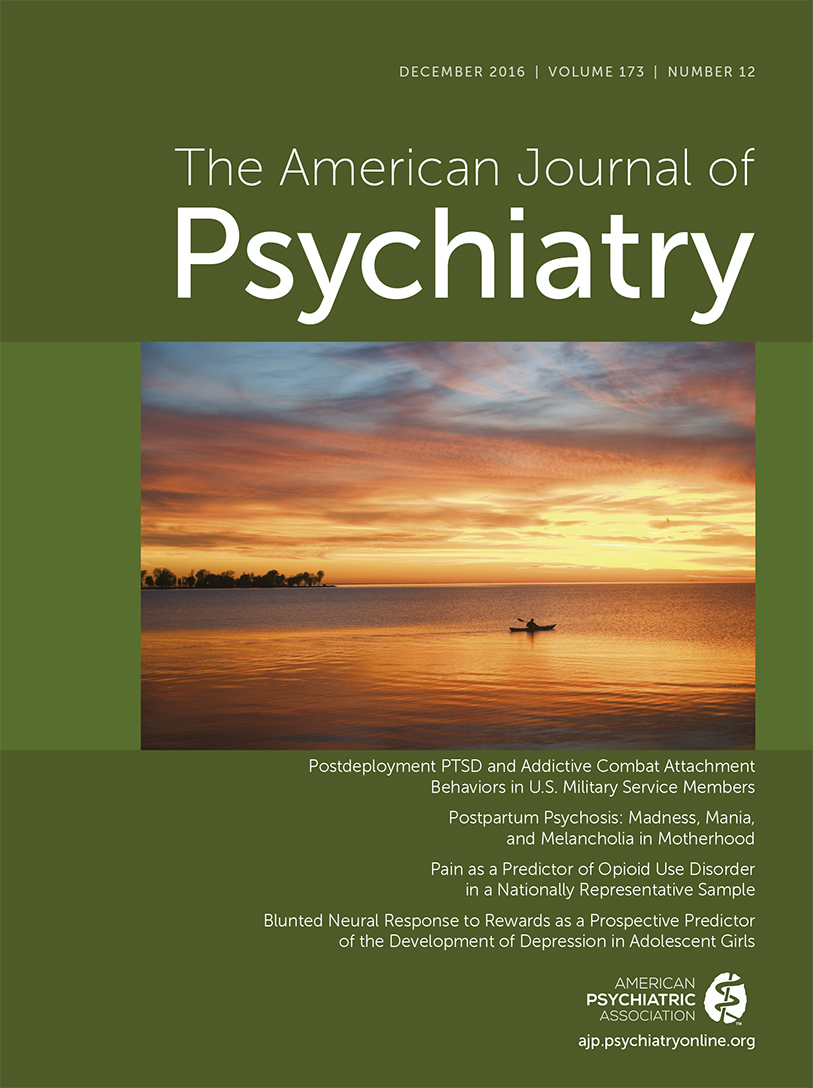Treatment of Postpartum Mood Disorder in Iran

The patient, a housewife, is now 54 years old. Her father refused to educate her beyond elementary school and compelled her to marry the son of his friend. She worked in her husband’s fields in addition to her household and maternal roles. She referred to her life’s course as “her chance.”
After her first delivery at age 24, she was confused, perplexed, and disoriented. She reported feeling like she was in a daze and like her thinking was arrested. She said she was being held in a terrible hole, detained by a fearful creature—a jinnee. She wondered if it was “worth living like this” and attempted self-poisoning with an herbicide. After detoxification in an emergency clinic, the patient’s family asked a traditional healer to help them remove the jinnee from her body by prayer. Gradually, her symptoms subsided, and after several weeks she was symptom free. Afterwards, she experienced some minor episodes that remitted after she attended her traditional healer.
She first saw a psychiatrist at age 30, for hypersexuality and hostility to her family. She said that her brother had abused her sexually and that her husband was in an extramarital affair. She showed psychomotor agitation and pressured speech. She was treated with lithium carbonate, haloperidol, and chlorpromazine, and her symptoms resolved within 2 weeks. She had 11 similar episodes thereafter, often after discontinuing medication. Two of these episodes were postpartum. Among her 13 siblings, two of her brothers and a sister have had similar episodes. During the patient’s recent episodes, she has been threatening to kill herself and her husband. She refused lithium maintenance treatment because she feared it would make her obese and cause her husband to leave her.
Discussion
In Iran’s health care system, there is no program specifically for the screening of postpartum mood disorders (PPMD). Lack of structured, widespread family education and psychotherapy programs focusing on PPMD, together with denial, helplessness, and cultural barriers, are factors that contribute to the misery of mothers trying to seek help. PPMD treatment can include pharmacotherapy and psychological and social support (1). A focus on ritual practices such as prayer and almsgiving for depression is influenced by Islam. A variety of postpartum rites, such as prescribed confinement periods (which normally range from 30 to 40 days), balanced diet, and practical and emotional support from family members and a traditional birth attendant, are practiced in Iranian communities. Although none of these customs were originally intended to relieve PPMD, they potentially provide social and emotional support for new mothers who are at risk of PPMD.
Complementary/alternative/traditional therapies are also used for care and treatment of PPMD. Some medicinal plants (such as saffron, rose, geranium, and Asperugo procumbens) and foods (such as fish, garlic, milk, oregano, mint, and spinach) are considered to have antidepressant effects and are prescribed by traditional doctors (2–5).
One of the rare traditional rites for treatment of depressed mothers in the southern part of Iran is called Zar, in which lay women go to practice mindfulness meditation. The pregnant or postpartum woman is accompanied by a traditional midwife and stays on a campus near the sea for 3 to 14 days. The traditional midwife massages the woman with an ointment that contains 21 kinds of herbal medicines. On the last day, the patient asks the traditional healer, who has a stick in her hands, to help raise the jinnee or “Al” (a fearful creature who is the persecutor of the parturient woman) from her body.
1 : What do women think about treatments for postnatal depression? Clin Eff Nurs 2004; 8:170–175Crossref, Google Scholar
2 : The effects of 40 and 80 mg hydro-alcoholic extract of Crocus sativus in the treatment of mild to moderate depression. J Mazandaran Univ Med Sci 2014; 24:48–53 (Persian)Google Scholar
3 : Evaluation of antidepressant activities of rose oil and geranium oil in the mouse forced swim test. J Babol Univ Med Sci. 2005; 7 (Persian)Google Scholar
4 : Comparing the antidepressant effects of Asperugo procumbens L and fluoxetine: a randomized double-blind clinical trial [dissertation]. Sari, Iran, Mazandaran University of Medical Sciences, 2010Google Scholar
5 : Food-based strategies for depression management from Iranian traditional medicine resources. Iran Red Crescent Med J 2014; 16:e14151Crossref, Medline, Google Scholar



